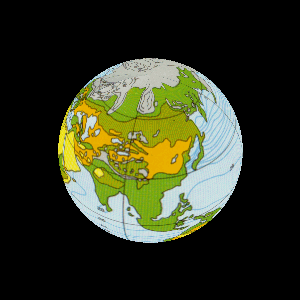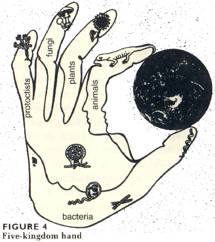



Lewis Thomas, M.D.
"The earth is most like a . . . cell"
Lewis Thomas, The Lives of the Cell, (1974)
The career physician, Lewis Thomas proposes a new way of thinking based on viewing traditional concepts in a new or different manner.
Lewis Thomas wrote, in his own words:
[he died in 1993].
"There
is an underlying force that drives together the several creatures comprising
myxotricha, and then drives the assemblage into union with the termite. If we could understand this tendency,
we could catch a glimpse of the process that brought single separate cells together
for the construction of metazoans, culminating in the invention of roses, dolphins,
and, of course, ourselves."
the assemblage into union with the termite. If we could understand this tendency,
we could catch a glimpse of the process that brought single separate cells together
for the construction of metazoans, culminating in the invention of roses, dolphins,
and, of course, ourselves."
"It might turnout that the same tendency underlies the joining of organisms into communities, communities into ecosystems, and ecosystems into the biosphere. If this is in fact the drift of things, the way of the world, we may come to view immune reactions, genes for the chemical marking of self, and perhaps all reflexive responses of aggression and defense as secondary developments in evolution, necessary for the regulation and modulation of symbiosis, not designed to break into the process, only to keep it from getting out of hand."
p. 29.
"The bacteria are beginning to have the aspect of social animals; they should provide nice models for the study of interactions between forms of life at all levels. They live by collaboration, accommodation, exchange and barter. They and the fungi, probably with the help of a communication system laid on by the viruses, comprise the parenchyma of the soil. They live on each other. Sometimes they live inside each other; the Bdellovibrio penetrate the walls of the other bacteria, tuck themselves up inside, replicate, and burst out again as though they thought themselves phages. Some microbial communities extend so deeply into the affairs of higher forms of life as to seem like new kinds of tissue in plants and animals. The rhizobial bacteria that swarm over the root hairs of leguminous plants have the look of voracious, invasive pathogens, but the root nodules that they then construct, in collaboration with the plant cells, become the earth’s chief organ for nitrogen fixation."
"We live in a dancing matrix of viruses; they dart, rather like bees, from organism to organism, from plant to insect to mammal to me and back again, and into the sea, tugging along pieces of this genome, strings of genes from that, transplanting grafts of DNA, passing around heredity as though at a great party. They (viruses) may be a mechanism for keeping new, mutant forms of DNA, in the widest circulation among us."
"I
have been trying to think of the earth as a single organism, but…I cannot
think of it this way. It is too big, too complex, with too many working parts….it
is most like a single cell."
p. 5.
"It is hard to feel affection for something as totally impersonal as the atmosphere, and yet there it is, as much a
part and product of life as wine or bread. Taken all in all, this sky is a miraculous achievement. It works, and for what it is designed to accomplish it is as infallible as anything in nature."
"We should credit it for what it is: for sheer size and perfection of function, it is far and away the grandest product of collaboration in all of nature.";
"It breathes for us, and it does another thing for our pleasure. Each day, millions of meteorites fall against the outer limits of the membrane and are burned to nothing by the fiction. Without this shelter, our surface would ling since have become the pounded powder of the moon. Even though our receptors are not sensitive enough to hear it, there is comfort in knowing that the sound is there over head, like the random noise of rain on the roof at night"
p. 148
My interpretation
- Dr. Thomas proposed a radically new way of conceptualizing reality based on viewing traditional concepts in a completely novel or divergently different manner from what grammar schools, religious schools or secular academies suggested.
- i.e. (That is to say)
Cooperation and complexity may be or are the inherent outcomes of any molecule capable of self-replication.RNA is such a molecule with the capacity to replicate, or make a copy of it's own molecular arrangements.
Dr. Thomas also recognized the present confusion between science and technology.
The confusion between science (pure research) and technology (applied research and development) interferes in the debate over policy issues that relate to science. In an automated, automotive & automatic culture our atomistically individualized socialization process assures a fragmented view of ourselves, our species, and our place in nature. Technology when confused with science often blurs the formal distinction made by Aristotle between the artificial and the natural. Science is the single most important collection of predictive laws, theories and hypotheses that complement the organic order of the physical universe.